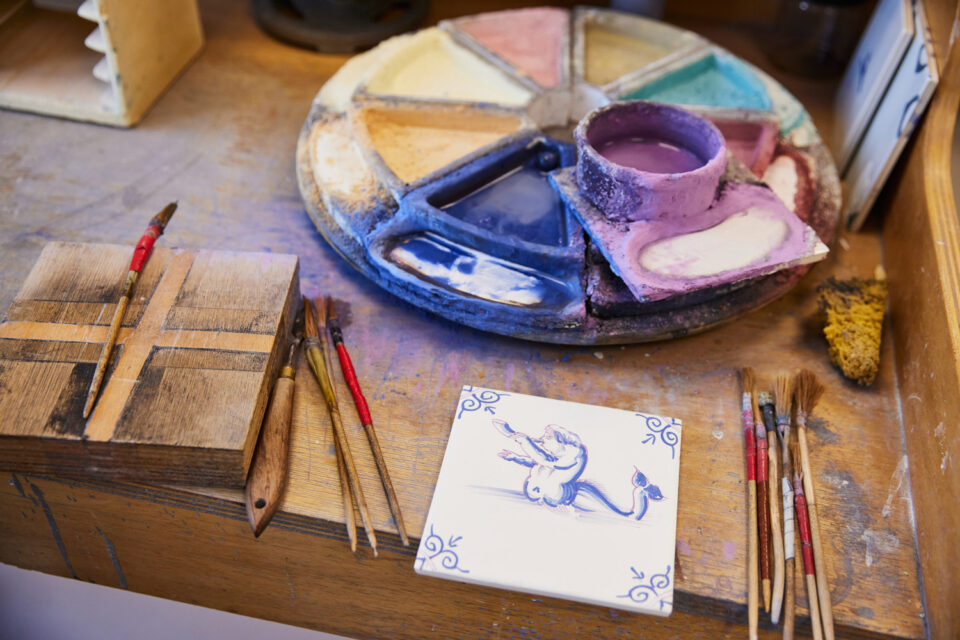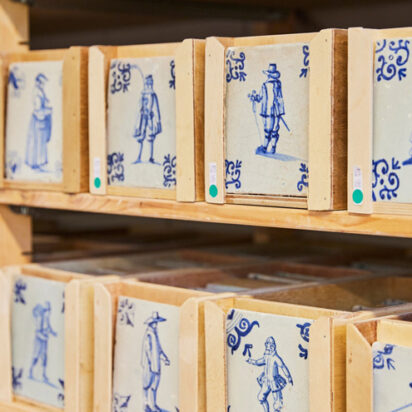

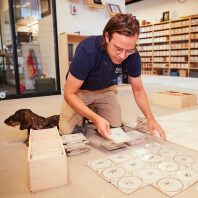
Step 1
Selecting the Delft tile design
The first step in the production process of our Delft tiles is selecting the design. We have a vast collection of thousands of original Delft tiles, as well as antique designs in books, paintings, and other sources.
The designs in our collection are based on those found on historical Delft tiles and have been carefully chosen to ensure that we are able to offer a diverse range of styles to suit a variety of tastes.
Our team takes great care in selecting the design that will be reproduced, ensuring that we maintain the integrity and authenticity of these timeless works of art. Whether you are looking for a traditional, ornate design or something more modern and minimalist, we have a Delft tile that will fit your style. And it’s even possible to customize the tiles to fit your needs and style.
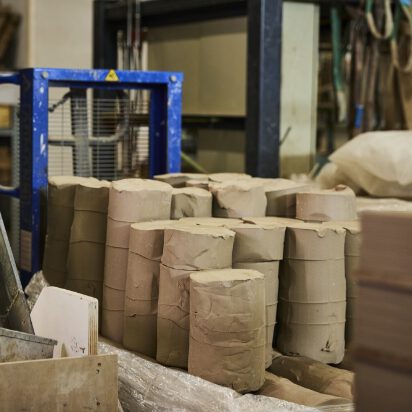
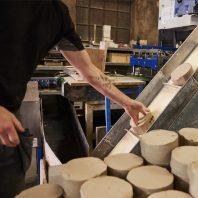
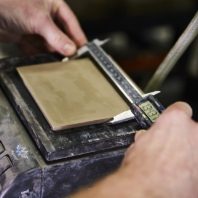
Step 2
Turning clay into tiles
Step 2 in the production process of our Delft tiles is shaping the clay into tiles. We use only the highest quality clay to ensure that our tiles are strong and durable enough to be used on walls.
The clay is carefully mixed and prepared to the right consistency, and then cut to the appropriate size of 13 by 13 cm’s (5,1” by 5,1”). The tiles are left to dry slightly before moving on to the next step in the process.
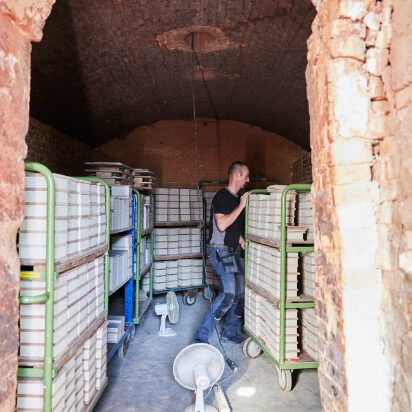
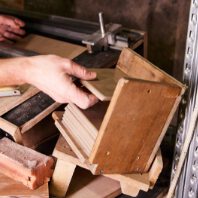
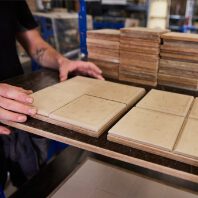
Step 3
Preparing the tiles for glazing (including drying and heating)
Step 3 in the production process is letting the tiles dry and harden for approximately 2 to 3 weeks after which they are fired for the first time to a maximum temperature of 1050 degrees Celsius. This helps to further strengthen and harden the tiles, ensuring that they are ready for the glazing process. The tiles spend approximately 2 days in the oven.
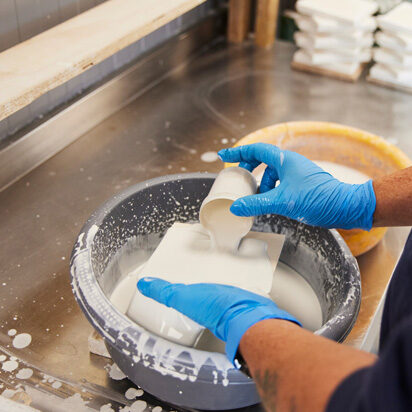
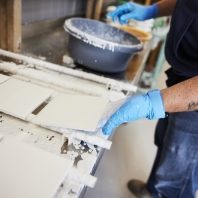
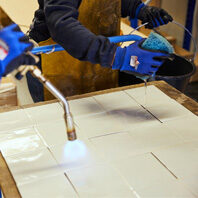
Step 4
Applying the glaze to the tiles, creating the famous Delft white tiles “witjes”
Step 4 in the production process of our Delft tiles is applying the glaze. The glaze is a liquid mixture that is applied to the surface of the tiles to give them a smooth, shiny finish.
Our team of skilled artisans carefully apply the glaze by hand, taking care to ensure that the tiles are evenly coated and that the glaze is applied smoothly. Special effects such as the crackled finish can also be added to the glaze to create a more authentic, aged and imperfect look.
The glazing we use allows for the tiles to be easily cleaned and maintained, ensuring that they will last for decades, possibly even for centuries. The glaze is of such a high quality that they do not require a sealer.
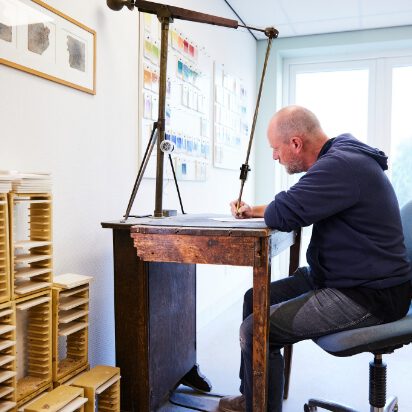
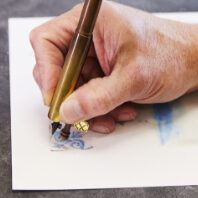
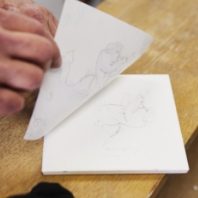
Step 5
Handdraw the first lines on the tile
Step 5 in the production process of our Delft tiles is adding the initial lines to the tile. Once the glaze has dried, the chosen design from step 1 is transferred onto the tile.
This is done by hand, using a technique called “sponzen” to add small, helpful lines to the tile as a guide. These lines provide a reference for the artist as they hand-draw the final design onto the tile in the next step.
The machines used are antique and have been used to create many, many tiles giving you the authentic edge.
This careful attention to detail ensures that each Delft tile is an accurate and authentic reproduction of the original design.
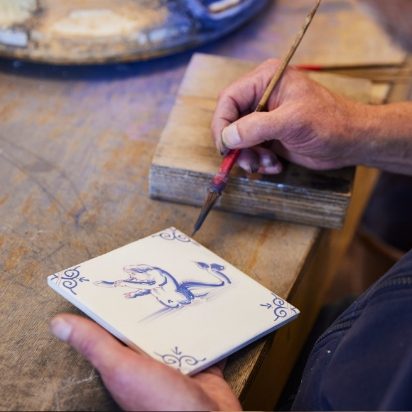
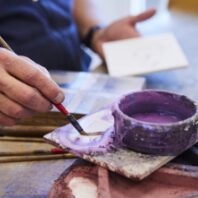
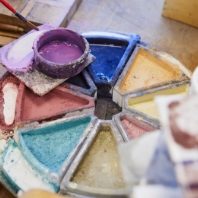
Step 6
Paint the design onto the tiles, by hand
All our tiles are hand-painted. We have a team of four skilled artists painting Delft tiles each day. This unique part of the production process makes our tiles the most authentic Delft tiles. We have the antique design, the antique shades of white and the original paint colours, but the most important ingredient is of course the unique influence of each artist on each tile. Even though there will always be repeating designs, none of them will ever be exactly the same.
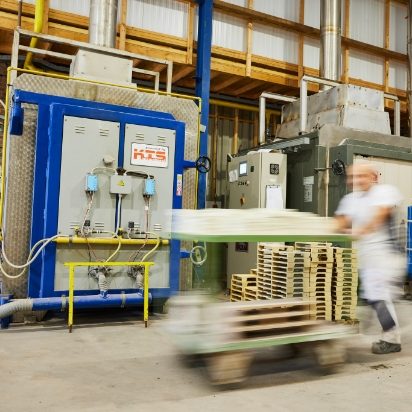
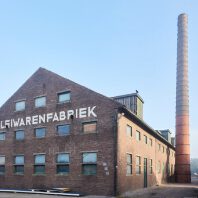
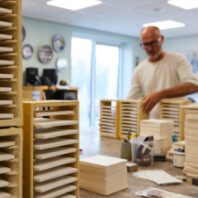
Step 7
Firing the tiles in the oven
When the artists are done painting the tiles, they will be fired for a second time at an even higher temperature of 1200 degrees Celcius. This entire process takes 24 hours, counting from the moment the tiles are in the oven until they have cooled down again. One oven can fire up to 1800 tiles at once!
When the tiles have completely cooled down they are taken from the oven and checked on irregularities. As it is a very complex process to make tiles, our team always checks carefully if there are no significant baking flaws, discoloration or other irregularities that are not part of the imperfections Delft tiles are known for.
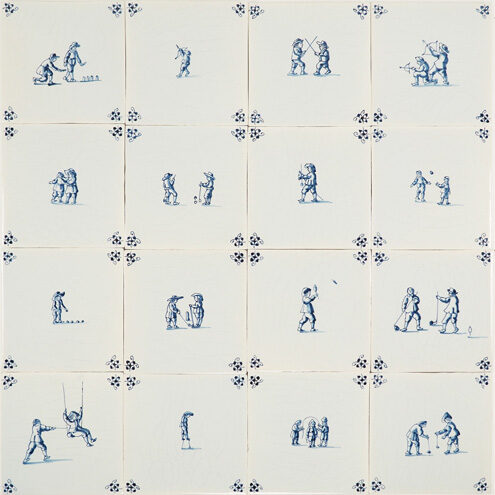
Step 8
The Delft tile reproductions are finished!
If a client has decided to add the ‘crackled finish’ enhancement, those tiles will go on a separate route. The crackled finish leads to a more aged and imperfect look, so to achieve this we have to heat the glaze of the tiles shortly with a blowtorch and cool it down with water. This creates the crackled glaze. By using a mixture of water and a manganese powder we are able to make the crackles visible.
When all enhancements have been added, the tiles will be packed in cardboard boxes. Depending on the type of tiles and the size of the order, we pack them in heavy-duty cardboard boxes with protective foam, wooden export crates (ISPM 15 certified) or export pallets. Before you know it they arrive safely at the project site!
